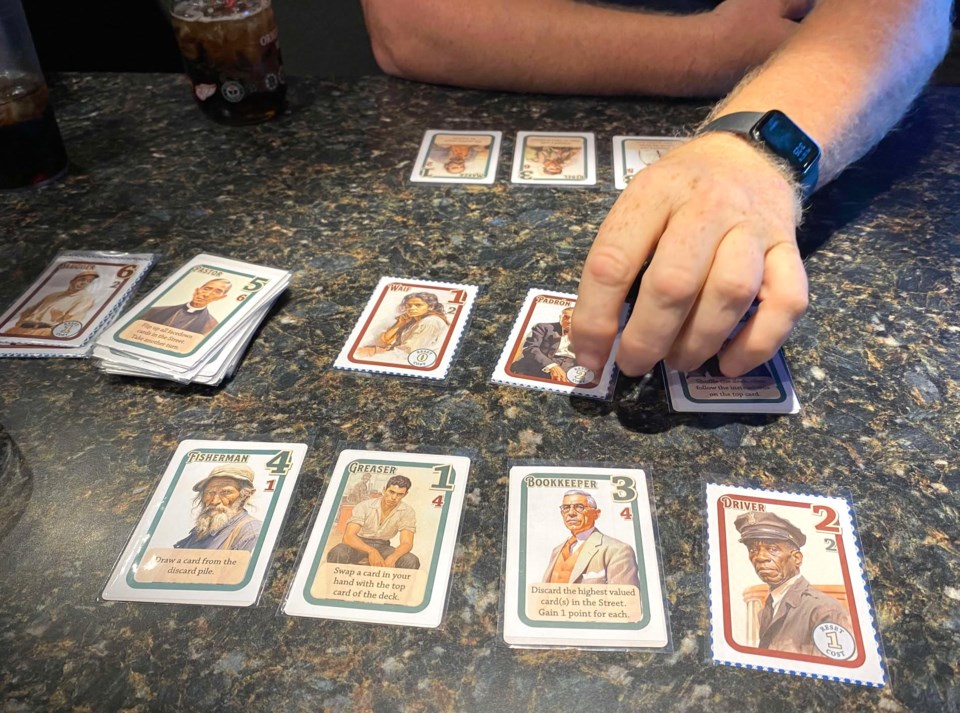Editor’s Note: Over the Christmas week the Meeple Guild will be offering up a game-a-day as a holiday treat. Enjoy!
YORKTON - James Ernest is an amazingly prolific game designer with literally dozens of games to his credit.
He is the sort of designer who likes feedback so he sends ideas out into the wilds of fandom to get feedback – which is great in the sense you get to try new games, but also means the quality is widely variable.
Ernest is of course the co-creator of Tak with author Patrick Rothfuss and that 2017 release is as good as any game released this millennium in the opinion of this Meeple Guild writer.
Also there are clunkers among Ernest’s creations too.
But since many of his games have a print ‘n play version at Crab Fragment Labs (www.crabfragmentlabs.com) you can check them out quite reasonably.
And that all brings us to The Harvest. A Fight City Card Game.
The immediate draw here was the great art for the double-sided 36-card deck. For a free PnP it looks amazing. Each card is a character rendered in something akin to what one might expect in a 1950s pulp tale.
That it is a mere 72 cards to print and sleeve – remember they are double sided – also was a draw. This was a quick trip to the print shop, some exacto knife work, and simple sleeving with a common playing card for strength.
Players start with 21 health points, and the goal is to drive your opponent’s health to zero, so you do need a way to track health. We used a pencil and paper.
The life points and that you are ultimately attacking your opponent to win will remind of collectible card games such as Magic: the Gathering.
Each card has a value between one and six on the front, and another value on the back. The 36 cards represent all combinations of the numbers one through six, front and back.
Each card also has an ability on the front, and a reset cost on the back.
Players start with hands of three, with three more cards in the middle, called The Street.
This setup can be random, or it can be chosen in an opening draft. The draft sounds interesting, but unless you really know the cards and game so you have strategies in mind, probably isn’t worth the effort.
On each turn, you may either activate a card in your hand or in the Street; attack with a card in your hand; reset a card in your hand; or buy the top card of the deck, notes the publisher.
The thing is when you buy a card, or want to reset one, you pay with your life points, and while there are cards that add to your life, the times you will want to ‘spend’ them outweigh the chances to replenish.
When a player takes damage, such as from an attack, they may prevent some or all of the damage by moving cards from the Street into the attacking player’s hand . . . The value of damage prevention depends on what cards are in the Street, and what cards the defender is willing to pass, explains the publisher.
Therein lies the great in-game decisions a player faces. If I prevent damage, then I give my opponent cards which only they have access to, whereas a card in ‘the street’ can be used by either player.
The Street is also limited with only three cards and does not refill automatically, so that too is a consideration.
This one won favour with us on the first play, with discussion how it is likely to gain added favour with more play – knowing the cards and seeing strategies takes time.
This one may not be another Tak – few games are that good – but it is certainly among the upper level of Ernest’s games.





